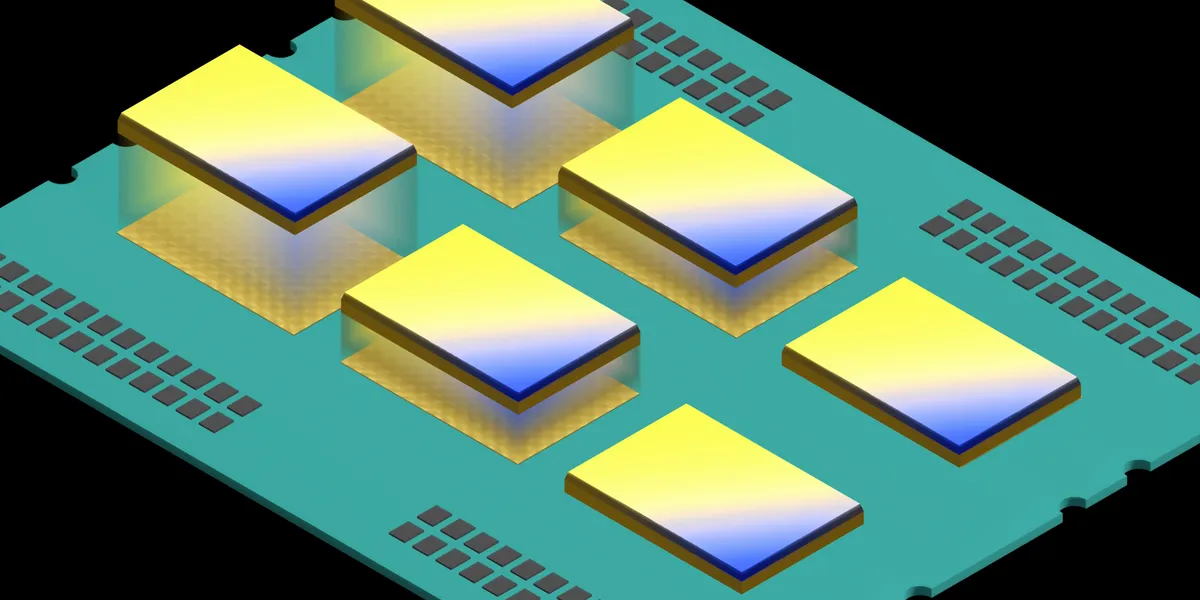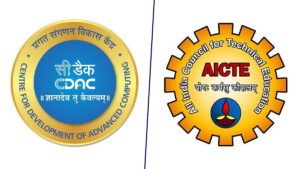Introduction
In the world of technology, innovation is a constant companion, pushing the boundaries of what’s possible. One of the latest marvels to capture the attention of tech enthusiasts and experts alike is the concept of “chiplets.”
Imagine these as tiny, specialized building blocks that can be combined in various ways to create powerful and efficient electronic devices. In this blog post, we’ll delve into the world of chiplets, breaking down the complex concepts into easy-to-understand terms, using a simple analogy to help even a novice grasp the potential they hold for transforming the semiconductor industry.
“Chiplets are a game-changer for the semiconductor industry. They offer a way to improve performance, reduce power consumption, and increase design flexibility.” –
~Pat Gelsinger, CEO of Intel
The Basics: What are Chiplets?
To put it simply, chiplets are like Lego pieces for computers. Imagine you have a collection of Lego bricks, each designed for a specific function – some are engines, some are wheels, and some are windows. You can take these different pieces and snap them together to create a custom vehicle that suits your needs.
Similarly, chiplets are tiny electronic components, each with its own unique functionality. These chiplets can be combined to create powerful and specialized devices, just like Lego pieces can be combined to build intricate structures.
Read more: Microprocessors vs. Microcontrollers: A Cake Analogy
The Lego-Like Assembly
Think of a computer or any electronic device as a puzzle, with each piece contributing to the overall functionality. Traditionally, these pieces (or chips) were large, monolithic structures that contained all the necessary functions in one piece.
However, this approach had limitations. It was like trying to build an entire vehicle with just one type of Lego brick – it could work, but there was limited room for customization and optimization.
Enter chiplets, the Lego pieces of the tech world. Instead of using one giant chip, designers now use smaller chiplets, each dedicated to a specific task.
Just as you’d use different types of Lego pieces for different parts of a vehicle, chiplets can be made using different manufacturing processes to optimize their performance. This allows for more efficient use of the available silicon and results in improved overall performance.
Early days and evolution
The term “chiplet” was coined by John Wawrzynek, a professor at the University of California, Berkeley, in 2006. However, the concept of chiplets has been around for much longer.
In the early 1990s, IBM developed a technology called Multichip Module (MCM) that allowed multiple chips to be interconnected on a single substrate. MCMs were used in some high-performance computing systems, but they were not widely adopted due to their high cost.
In recent years, there has been renewed interest in chiplets due to the challenges of scaling traditional monolithic chips. As the size of transistors continues to shrink, it becomes increasingly difficult to manufacture monolithic chips with high yields.
Chiplets offer a potential solution to this problem, as they can be made using different manufacturing processes and then interconnected on a single substrate.
AMD was one of the first companies to adopt chiplet technology. In 2017, the company released its Ryzen 7 1800X processor, which uses chiplets to combine different cores and cache memory.
AMD has since released several other products that use chiplets, including its Epyc CPUs and its Instinct GPUs.
Intel is also working on chiplet-based designs. The company is expected to release its first chiplet-based CPU in 2023. Other companies that are working on chiplet technology include IBM, NVIDIA, and Qualcomm.
Moore’s Law: A Quick Recap
Moore’s Law, named after Intel co-founder Gordon Moore, observes that the number of transistors on an integrated circuit (IC) doubles approximately every two years. This exponential growth has fueled the astonishing progress in computing power over the decades.
However, as transistors approach atomic scales, the challenges of maintaining this pace become formidable.
Chiplets: A Synergy with Moore’s Law
Enter chiplets, the architects of a harmonious dance with Moore’s Law. Imagine Moore’s Law as a fast-paced race, and chiplets as versatile teammates that ensure the race continues despite hurdles. How do they achieve this?
Enhanced Performance: Moore’s Law has propelled the integration of more transistors on a single chip, but chiplet technology takes this further. By utilizing chiplets with diverse manufacturing processes, the available silicon is utilized optimally. This synergy results in superior performance, a crucial facet in high-demand applications.
Power Efficiency: The relentless quest to reduce power consumption finds an ally in chiplets. Just as a skilled athlete conserves energy with precise movements, chiplets can be customized for energy efficiency. This is particularly vital for mobile devices and other power-sensitive applications.
Flexibility in Design: Think of Moore’s Law as a roadmap, and chiplets as customizable vehicles navigating it. Chiplets empower designers to create tailored devices by handpicking components, akin to choosing specific Lego bricks for a unique structure. This design flexibility ensures compatibility with the evolving landscape of Moore’s Law.
The Synergy in Action: Real-World Instances
In the context of Moore’s Law, consider the following real-world instances:
AMD’s Ryzen and Epyc CPUs: Chiplets play a pivotal role in enhancing these CPUs’ capabilities. Different chiplets, each containing distinct computing elements, are combined to form powerful processors. This approach complements Moore’s Law by maximizing performance within its bounds.
IBM’s Power10 CPU: Chiplets shine here by optimizing the interplay of processing units, memory controllers, and I/O blocks. This intelligent orchestration harmonizes with Moore’s Law, achieving enhanced scalability and efficiency.
NVIDIA’s Hopper GPU: Chiplets collaborate seamlessly to construct potent GPUs with various compute engines and memory controllers. This amalgamation supports Moore’s Law by ensuring high-performance computing while accommodating its trends.
The Future: Chiplets and the Evolution of Moore’s Law
In essence, chiplets are the skillful dancers that keep Moore’s Law’s rhythm steady. As the law faces mounting challenges, chiplets offer a means to sustain progress. They counteract diminishing returns from traditional monolithic chips by offering performance improvements, power efficiency, and design adaptability. While Moore’s Law has set the stage, chiplets step onto it, embracing the challenges and ushering in a new era of technological evolution.
Conclusion
The tapestry of technology is woven with innovation, and chiplets emerge as a testament to this ceaseless progress. Their symbiotic relationship with Moore’s Law paints a vivid picture of adaptability and advancement. As chiplets evolve and synergize with Moore’s Law, the world of computing stands poised to embark on an exhilarating journey, where customizability, performance, and energy efficiency harmonize to shape the future of electronics. Just as Lego pieces yield endless possibilities, chiplets unfurl a limitless canvas upon which the next chapter of computing history is written.








